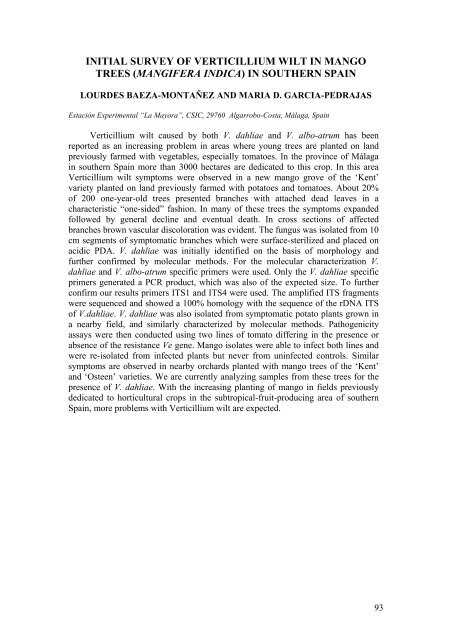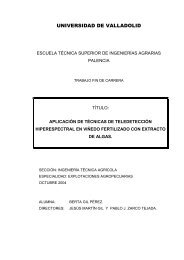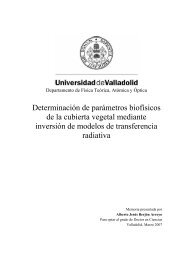10th INTERNATIONAL VERTICILLIUM SYMPOSIUM 16-20 ...
10th INTERNATIONAL VERTICILLIUM SYMPOSIUM 16-20 ...
10th INTERNATIONAL VERTICILLIUM SYMPOSIUM 16-20 ...
Create successful ePaper yourself
Turn your PDF publications into a flip-book with our unique Google optimized e-Paper software.
INITIAL SURVEY OF <strong>VERTICILLIUM</strong> WILT IN MANGOTREES (MANGIFERA INDICA) IN SOUTHERN SPAINLOURDES BAEZA-MONTAÑEZ AND MARIA D. GARCIA-PEDRAJASEstación Experimental “La Mayora”, CSIC, 29760 Algarrobo-Costa, Málaga, SpainVerticillium wilt caused by both V. dahliae and V. albo-atrum has beenreported as an increasing problem in areas where young trees are planted on landpreviously farmed with vegetables, especially tomatoes. In the province of Málagain southern Spain more than 3000 hectares are dedicated to this crop. In this areaVerticillium wilt symptoms were observed in a new mango grove of the ‘Kent’variety planted on land previously farmed with potatoes and tomatoes. About <strong>20</strong>%of <strong>20</strong>0 one-year-old trees presented branches with attached dead leaves in acharacteristic “one-sided” fashion. In many of these trees the symptoms expandedfollowed by general decline and eventual death. In cross sections of affectedbranches brown vascular discoloration was evident. The fungus was isolated from 10cm segments of symptomatic branches which were surface-sterilized and placed onacidic PDA. V. dahliae was initially identified on the basis of morphology andfurther confirmed by molecular methods. For the molecular characterization V.dahliae and V. albo-atrum specific primers were used. Only the V. dahliae specificprimers generated a PCR product, which was also of the expected size. To furtherconfirm our results primers ITS1 and ITS4 were used. The amplified ITS fragmentswere sequenced and showed a 100% homology with the sequence of the rDNA ITSof V.dahliae. V. dahliae was also isolated from symptomatic potato plants grown ina nearby field, and similarly characterized by molecular methods. Pathogenicityassays were then conducted using two lines of tomato differing in the presence orabsence of the resistance Ve gene. Mango isolates were able to infect both lines andwere re-isolated from infected plants but never from uninfected controls. Similarsymptoms are observed in nearby orchards planted with mango trees of the ‘Kent’and ‘Osteen’ varieties. We are currently analyzing samples from these trees for thepresence of V. dahliae. With the increasing planting of mango in fields previouslydedicated to horticultural crops in the subtropical-fruit-producing area of southernSpain, more problems with Verticillium wilt are expected.93




